How to photograph the super blood moon with your camera or phone
Capture tomorrow's super blood moon in all its glory
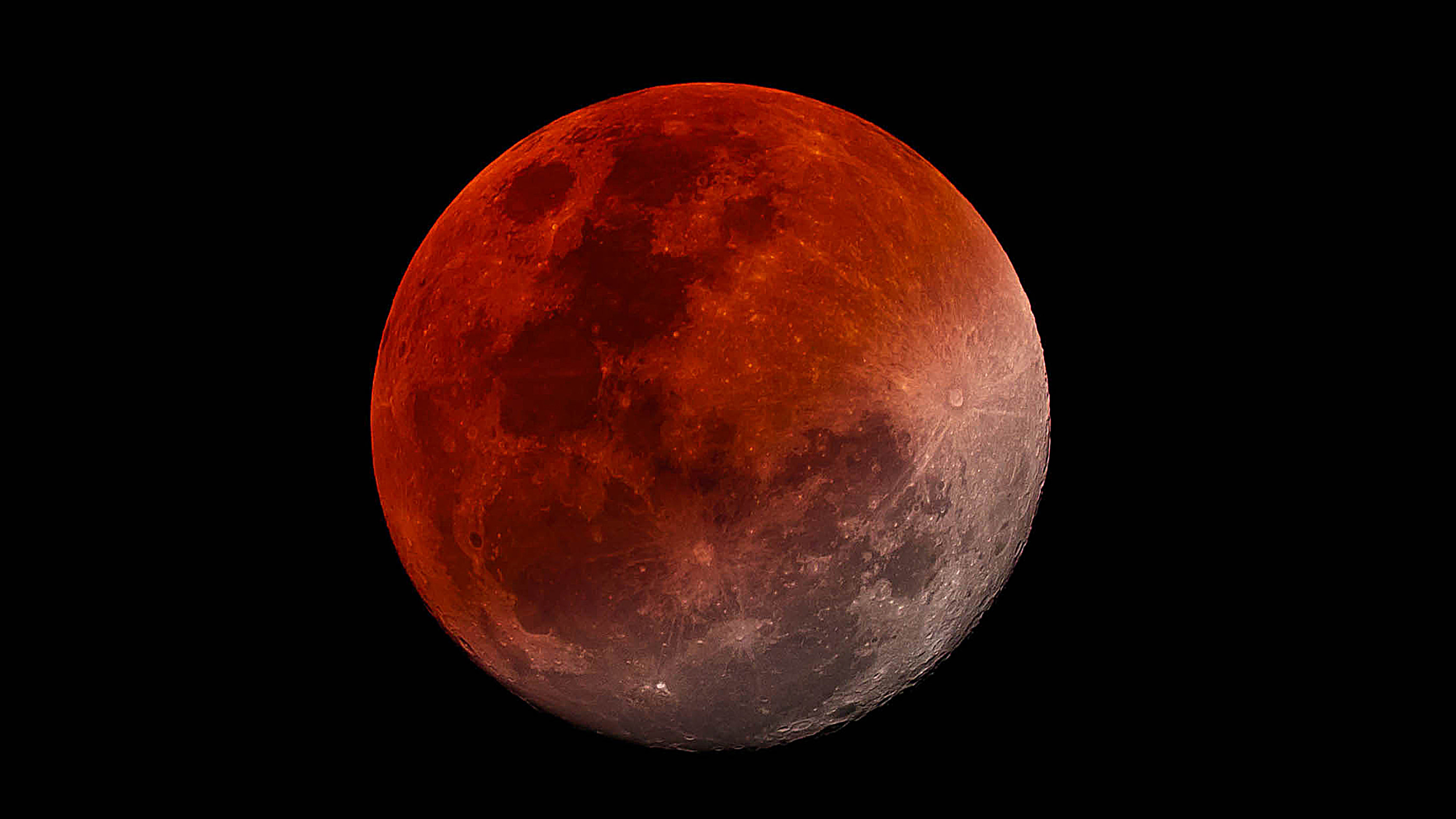
The super blood moon, otherwise known as the super flower blood moon, will be gracing our skies tomorrow – so it's a good time to hatch a photographic plan to make sure you get a money shot of this pretty rare event.
This celestial event will be a special one for a couple of reasons. Firstly, this is the last 'super moon' of 2021. It'll be taking place on May 26 because it'll be passing just 222,116 miles from Earth – in galactic terms, mere cigarette paper’s width – which means it'll look larger than usual.
But the reason the moon will also be turning a ghostly red (hence 'blood moon') is because tomorrow's full moon will coincide with a total lunar eclipse. In other words, it's a bit of an astrophotography jackpot. An eclipse happens when the Earth sits almost perfectly between the Sun and the Moon, blocking direct sunlight from reaching the moon and refracting its light through our atmosphere.
With the moon so close and also glowing a shade of red – depending on where you are in the world – you'll be wanting to snap a decent picture or two. But how? Luckily, we've drawn up a battle-plan to help you do just that, whether you're using a camera or your phone. Here's how to nail Operation Blood Moon.
What is a super blood moon?
You hopefully already know what a full moon is – that's when the Moon sits exactly opposite the Sun, reflecting the maximum possible amount of light, and making for an almost cartoonish, perfectly round satellite.
A super moon is when the moon is at its perigee – in other words, when it makes its closest approach to Earth, which means it appears larger in the sky.
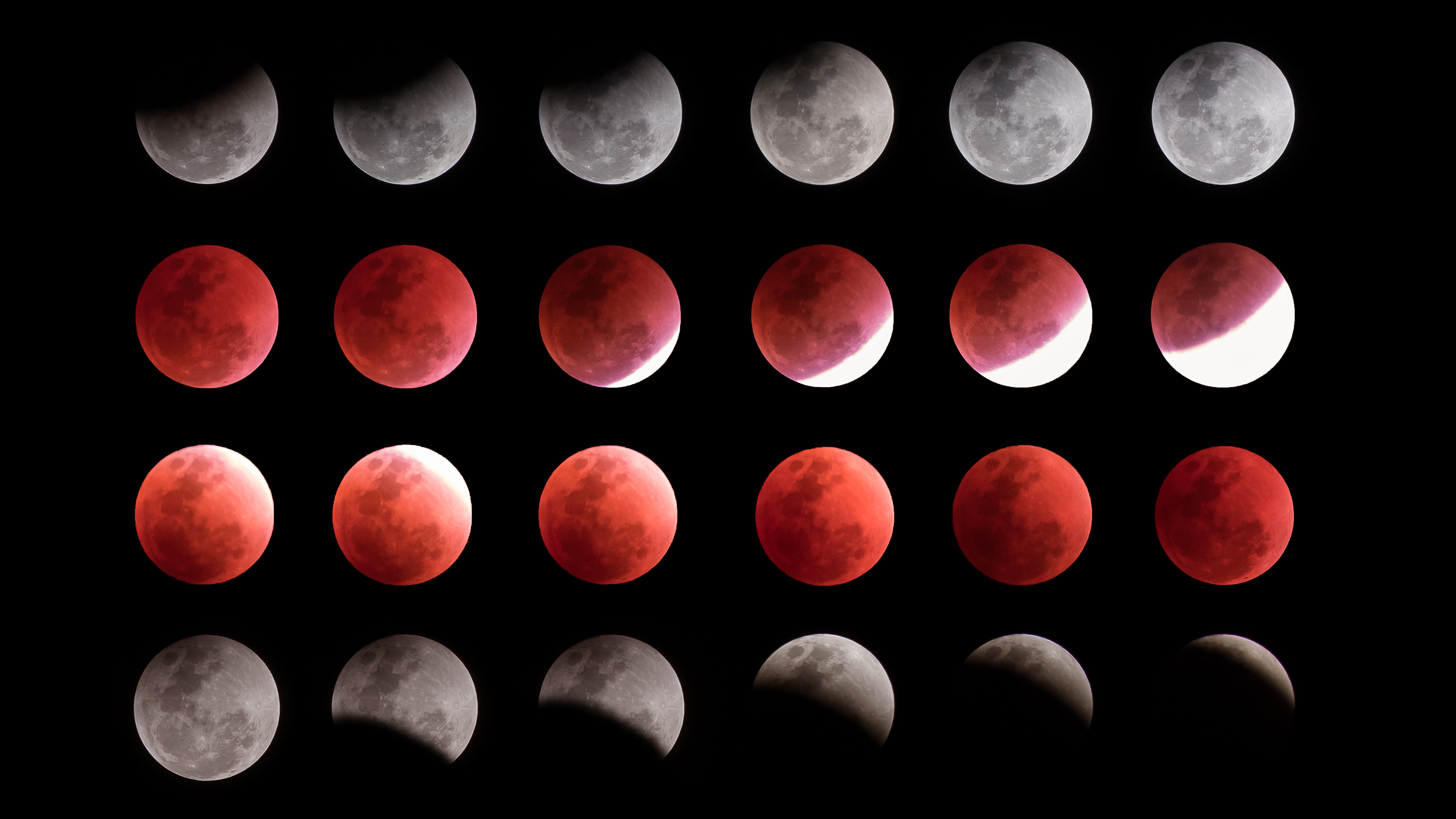
Super moons are pretty impressive in their own right, but this one will be about 7% bigger than average. That might not sound like much, but it promises to look pretty cool.
Get daily insight, inspiration and deals in your inbox
Sign up for breaking news, reviews, opinion, top tech deals, and more.
Add that to the rouge of the lunar eclipse, though, and Moon nerds – and the rest of us – are in for something pretty special on May 26. Well, depending on where you live...
When and where can I photograph the blood moon?
Exactly where the Moon will look its biggest and reddest is heavily dependent on where you are on this planet.
If you’re hoping to see any part of the lunar eclipse, the UK is the last place you want to be – North, Central and South America are all good bets, Hawaii, huge chunks of Australia (and all of New Zealand) and East Asia are all going to have a good show, too.
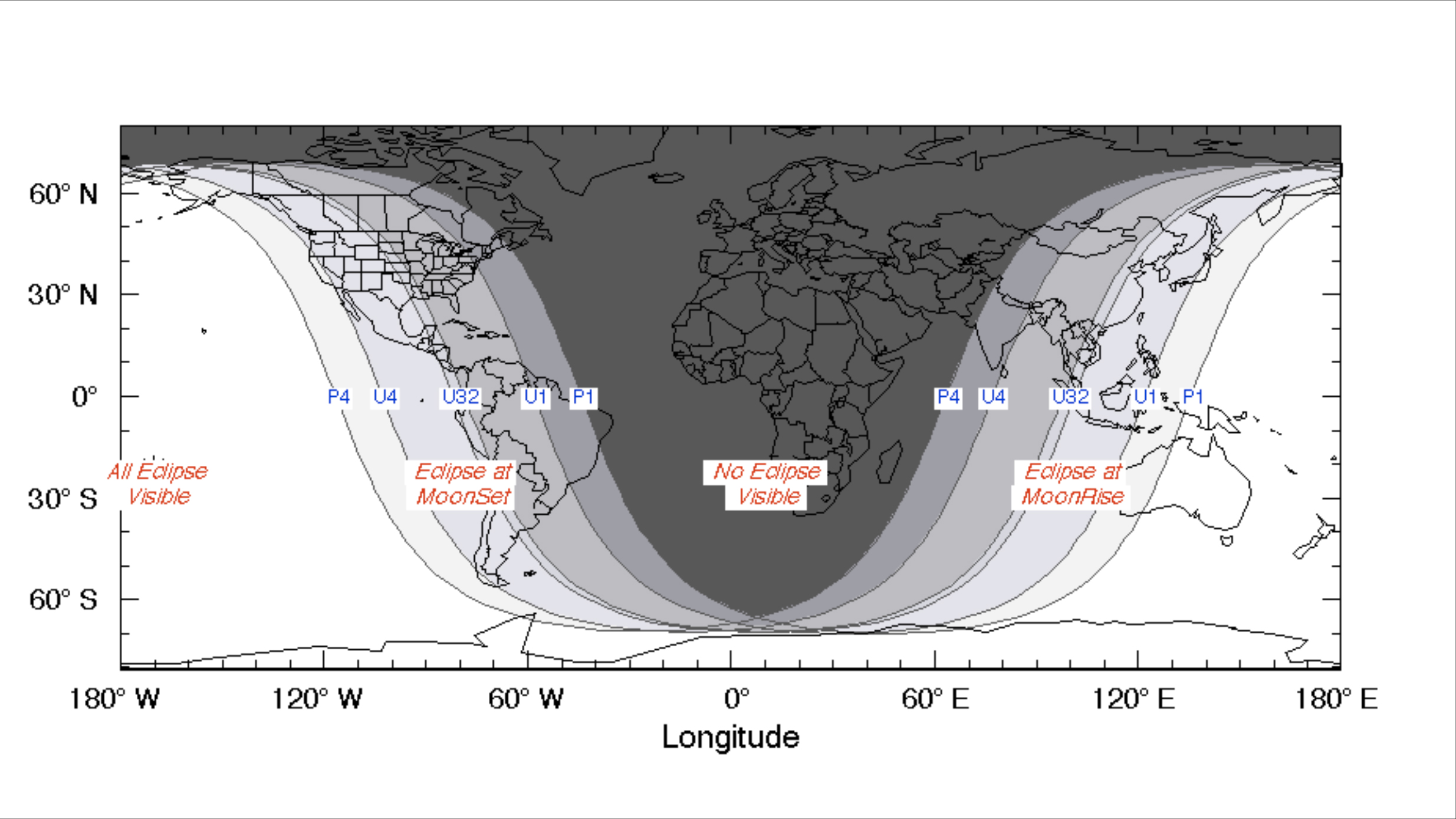
If you have the good luck to be in any of those places, you can expect the full lunar eclipse to happen around 11:18 UTC (Universal Time).
To work out exactly what time that is where you are, use this eclipse path map or check out NASA's eclipse website (click on the May eclipse's calendar date for more info).
But here are some key times for the places that where the total eclipse will be visible (San Francisco, Sydney, Singapore) and partially visible (New York) on May 26.
| City | Partial eclipse begins | Total eclipse begins | Maximum eclipse | Total eclipse ends |
| San Francisco, USA | 02:44 (PDT) | 04:11 (PDT) | 04:18 (PDT) | 04:25 (PDT) |
| Sydney, Australia | 19:44 (AEST) | 21:11 (AEST) | 21:18 (AEST) | 21:25 (AEST) |
| Singapore, Singapore | 17:44 (SGT) | 19:11 (SGT) | 19:18 (SGT) | 19:25 (SGT) |
| New York, USA | 05:44 (EDT) | 07:11 (EDT) | 07:18 (EDT) | 07:25 (EDT) |
For the fortunate places that are likely to get full visibility of the blood moon eclipse, the key times are the 14 minutes or so between when the total eclipse begins and ends. During the partial eclipse, the moon will just be starting to get red, but it should be completely red from the times in the second column above.
How to photograph the super blood moon with your camera
If you can tolerate the late night in some places (allow us to recommend high-sugar cereal bars and a big cup of coffee), you’ll be rewarded, because unlike a lot of night-sky photography, getting a decent snap is actually pretty straightforward.
With the Moon reflecting the maximum amount of light possible, you can forget about worrying about the 500 rule, which is an astrophotography formula where you divide the number 500 by the focal length of your lens to give you your maximum exposure time. You also don't really have to worry too much about star trackers or blended exposures either.
In many cases, the moon will actually be so bright that you’ll be shooting exposures fast enough to not need a tripod. But if you have one, it's well worth taking one to your chosen spot to give you that extra leeway.
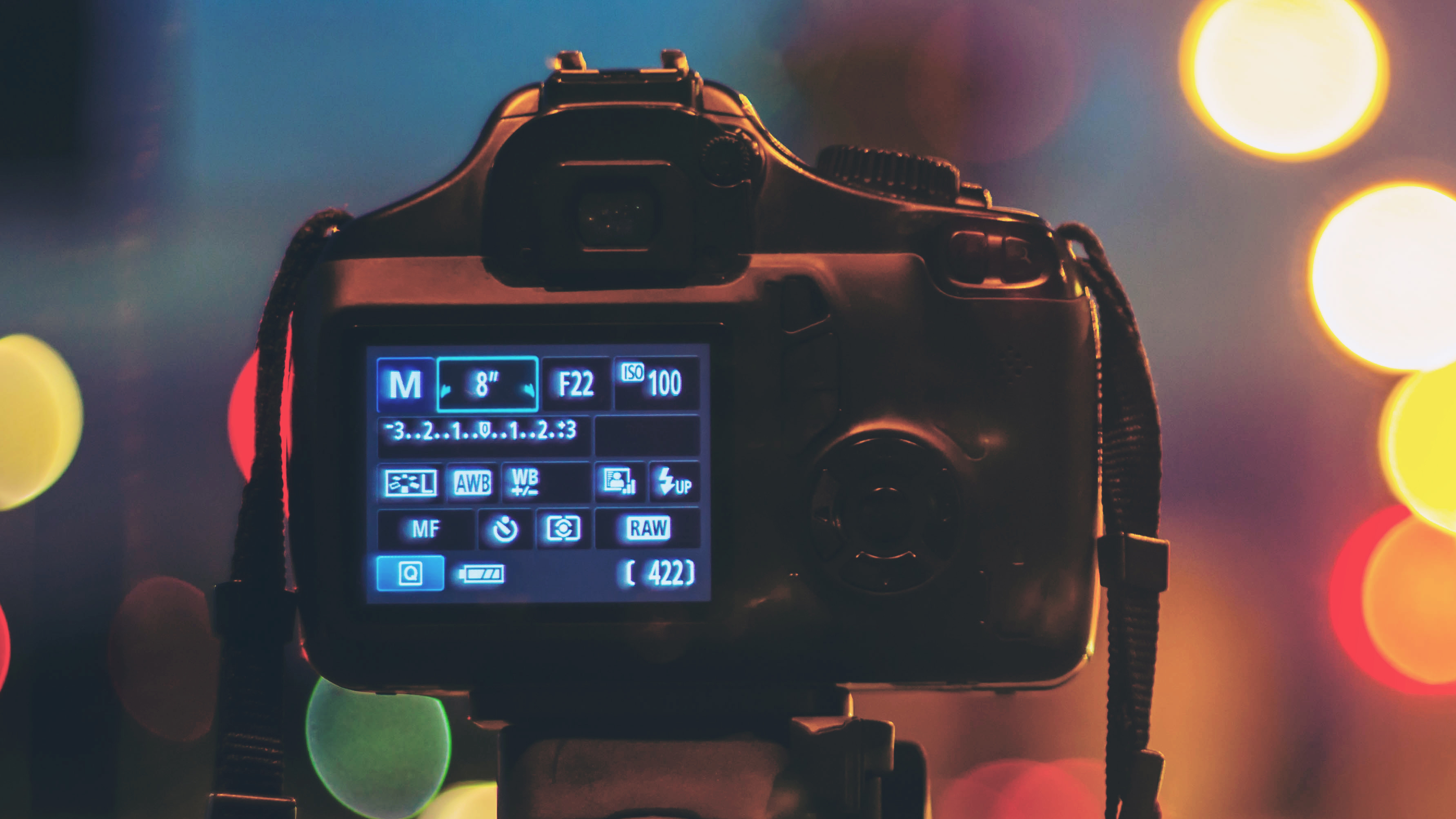
Headtorch
A telephoto lens (at least 300mm)
Photopills app (iOS and Android)
Tripod
Snacks
If you’re hoping to get a spectacular, fill-the-frame shot, you’re going to want a long lens. Probably a very long lens – even 300mm (in full-frame terms) will leave our closest galactic neighbor looking a little lonely, if you're not planning to include any foreground interest.
You'll certainly get more impressive results if you have a lens in the 500-600mm range, though today's high-resolution cameras mean that you can always compensate by cropping in a little if not.
You also get bonus points if you can get somewhere with minimum light pollution from nearby towns and cities. But again, with the moon so bright this isn’t like Milky Way photography, where every photon counts.

Shooting the moon – on its own – doesn’t take much in the way of photographic chops. But if you have more grand ambitions than a big glowing circle on a black background, you’re going to need to plan a little bit, which is where our favorite night-sky app, PhotoPills, comes in.
Photopills is one of the most useful photography apps around thanks to features like its AR mode, which lets you hold your phone up to the sky and see exactly where the sun and moon will be in the sky at different times.
The makers of the app have actually made their own guide to capturing a photo of the blood moon using Photopills, which you can check out below. But for more specific guidance on the best camera settings to use for the both the partial eclipse and the total lunar eclipse, scroll down for our instructions.
The step-by-step instructions
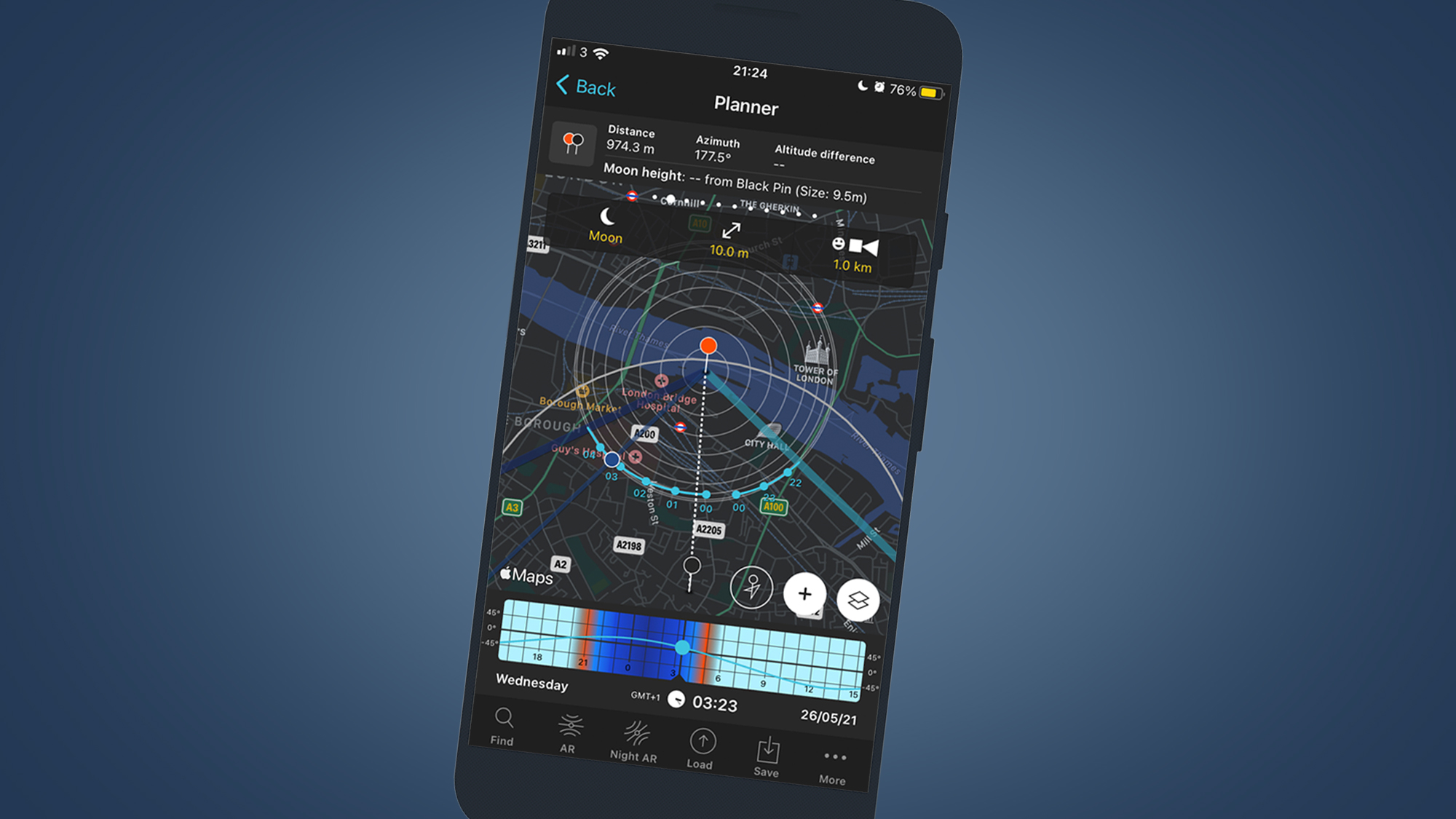
1. Choose your location
If you want an easy ride, bite the bullet and shell out for Photopills ($9.99 / £9.99 / AU$14.99) as it's worth its weight in gold. If you’re standing where you think you’ll be for the blood moon, you can use PhotoPills’ AR function to superimpose the moon on your location, allowing you to see where the Moon will be relative to your surroundings at its various phases.
This is particularly handy if you're looking to snap it next to a landmark, as you can effectively frame your shot in advance. Bear in mind, though, that you may need a wide-angle lens to do this or shoot two exposures – one for the moon and one for the foreground – and then blend them together in Photoshop afterwards.
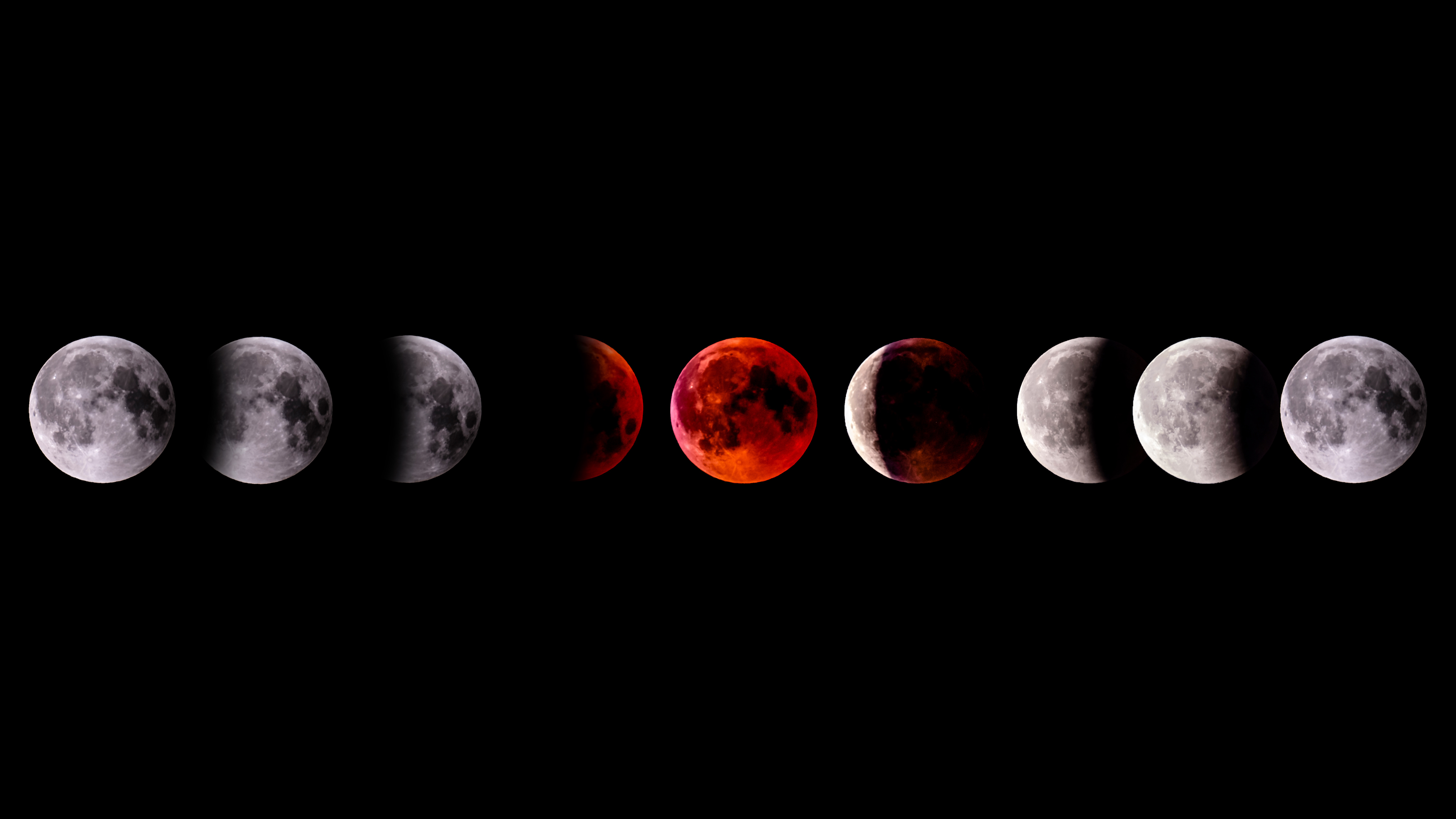
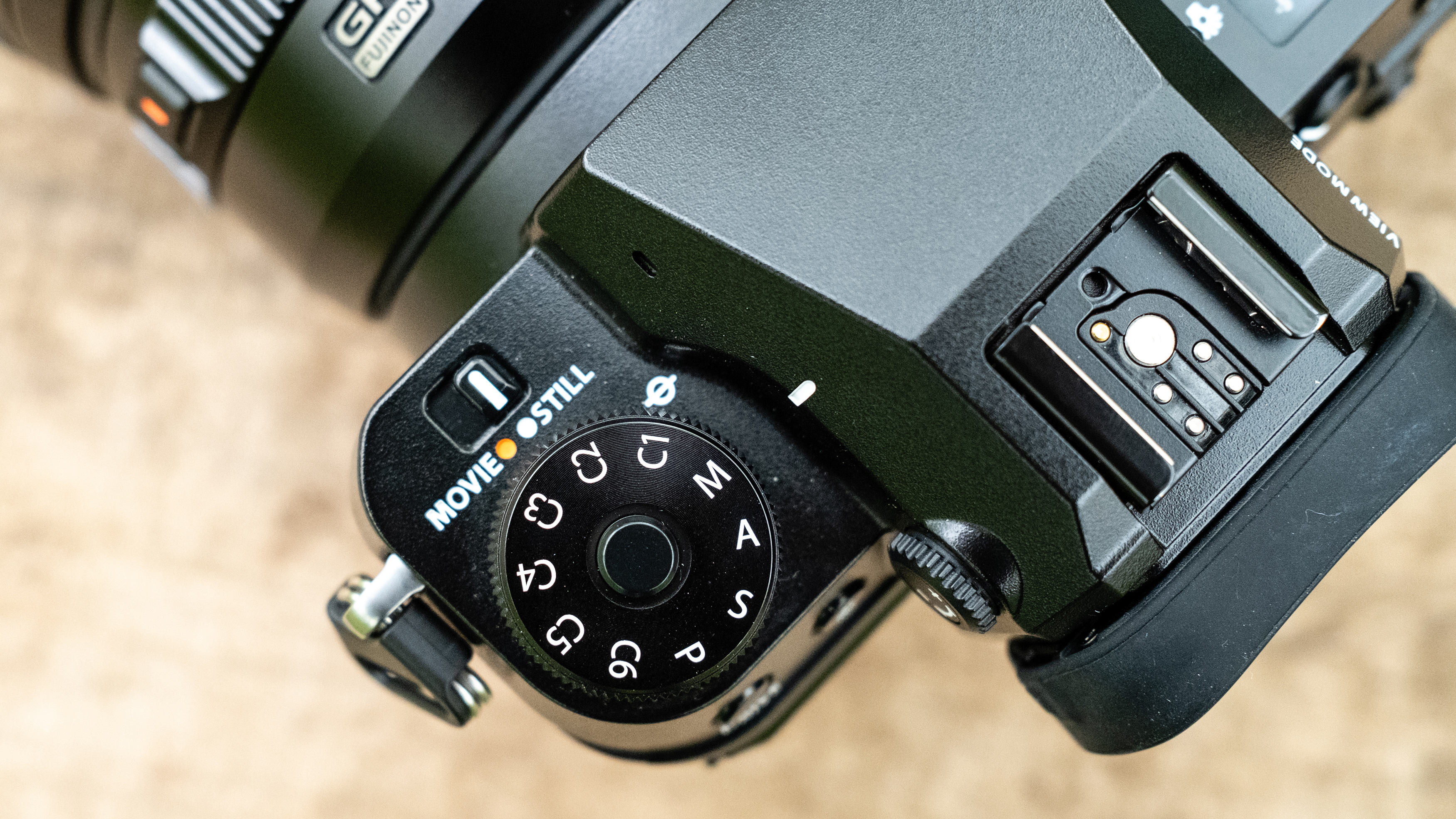
ISO. The measure of how sensitive your camera is to light – the higher the number the faster it reacts to light hitting it. With a bright moon you can keep this low, but you might need to push it up for blood moon total eclipse.
Aperture. The hole in your lens through which light passes. Ordinarily for night-sky photography you’d shoot the widest possible aperture to get as much light in as possible, but with for a bright Moon you’ll be able to stop down a bit.
Shutter speed. The flappy bit of your camera. Again, most night-sky photography uses very long exposures, but with the moon belting out light you’ll probably be shooting in the hundredths of a second in the partial eclipse.
2. Setting up
For starters, make sure your camera is shooting in raw+JPEG mode, as you'll likely want the extra editing leeway that raw files give you. This means you'll be able to tweak the exposure, contrast and clarity to bring out as much detail as possible.
Attach your longest lens and switch it into manual mode (usually denoted by an 'M' on the mode dial), as photographing a blood moon requires a bit of trial and error with your ISO and shutter speed. You may be able to rely on autofocus for your shot, but be prepared to switch to manual focus, which can also help you avoid having to refocus every time you take a snap. If you're including a landmark for foreground interest, focus on that.
3. The settings
There aren't any hard and fast settings for shooting the blood moon, as they'll likely need to change in different phases of the eclipse. A good starting point for the partial eclipse is to start at ISO 100, with an f/8 aperture and a shutter speed of somewhere between 1/125-1/250 sec. But when the total eclipse begins, you'll want to brighten your exposure to make sure the whole moon is well-exposed, rather than just the bright part.
Because you're likely shooting with a long lens and the moon will be moving through the sky, you'll want to keep the shutter speed relatively fast (ideally no slower than 1/2 sec). This means that ISO and aperture are your only really levers for adjusting the exposure. Keep your ISO between ISO 800-3200 and your aperture between f/4-f/8, though, and you'll maximize your chances of a good-quality shot. To improve your chances further, make sure you use your camera's self-timer rather than pressing its shutter button.
- These are the world's best cameras for photography
How to photograph the blood moon with your phone
Not everyone has a dedicated camera, but that doesn't you're left out of the blood moon party. You can still snap a decent photo with your smartphone, particularly if you want to shoot a wider angle that includes an interesting foreground. The slightly dimmer eclipsed moon is also slightly easier to shoot with a phone than a blinding full moon, too.
The main thing you'll need is a camera app that offer a bit more flexibility than your phone's default camera. Allow us to recommend something from our roundup of the best camera apps: on iPhone your best bet is Halide Mark II, or for Android phones we'd go for Open Camera.
Halide Mark II might be expensive, but with the option to shoot raw (better dynamic range) and with manual controls, it’s a natural choice for when you know you’re going to face an unusual situation.

Once you have access to manual controls, much of the advice above for cameras applies to shooting with your phone. Shoot in raw to give yourself as much editing leeway as possible, use a tripod like a Gorillapod to keep things steady, and lock exposure on the moon by tapping on it then pulling your finger up or down to tweak the exposure.
The most important thing with a phone shot is to avoid the temptation to digitally zoom into the moon, as the quality will rapidly degrade into a noisy mush – instead, try to get creative by including some significant foreground interest like a building and keep the blood moon relatively small in your frame.
Phones don't have an adjustable aperture, so you'll need to adjust exposure by either switching to manual mode to play with the shutter speed and ISO, or dragging up or down on the focus point to tweak your exposure. If your app has a self-timer, use that to avoid the camera shake caused by hitting the shutter. And once you've grabbed a shot, refine it with one of the best photo editing apps like Snapseed or Lightroom.
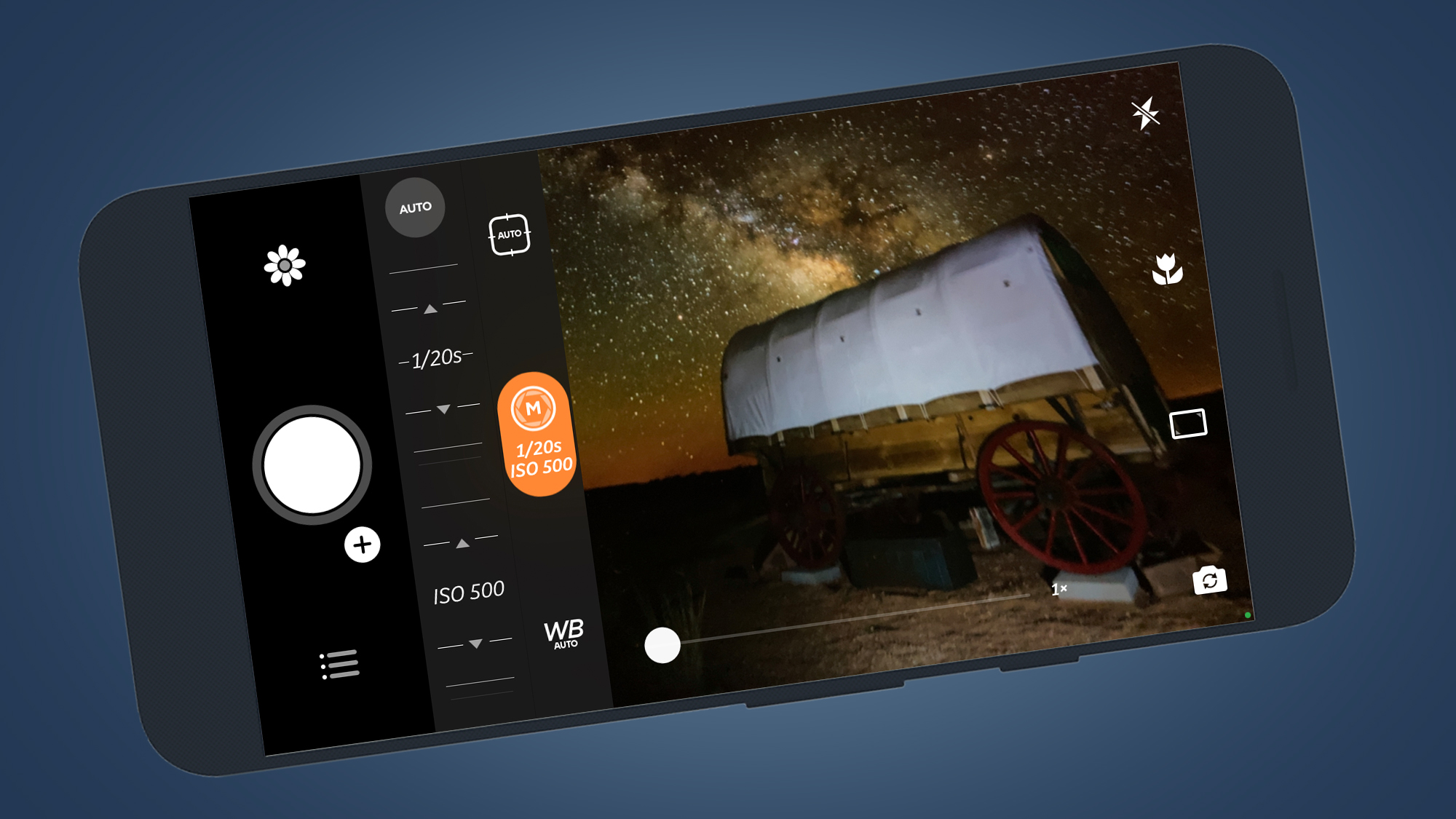
If you want a more impressive full-frame shot you might want more reach than your camera normally offers – even the iPhone’s 12 “telephoto” lens only reaches 52mm.
There are various clip-on options dedicated to long-range phone photography, but you’ll also get tolerable results holding your phone up to a decent set of binoculars or a telescope. In fact, the latter might well get you more reach and a bigger subject than even the most impressive telephoto lens.
- 52 photography projects: a great technique to try every week of the year
Dave is a professional photographer whose work has appeared everywhere from National Geographic to the Guardian. Along the way he’s been commissioned to shoot zoo animals, luxury tech, the occasional car, countless headshots and the Northern Lights. As a videographer he’s filmed gorillas, talking heads, corporate events and the occasional penguin. He loves a good gadget but his favourite bit of kit (at the moment) is a Canon EOS T80 35mm film camera he picked up on eBay for £18.